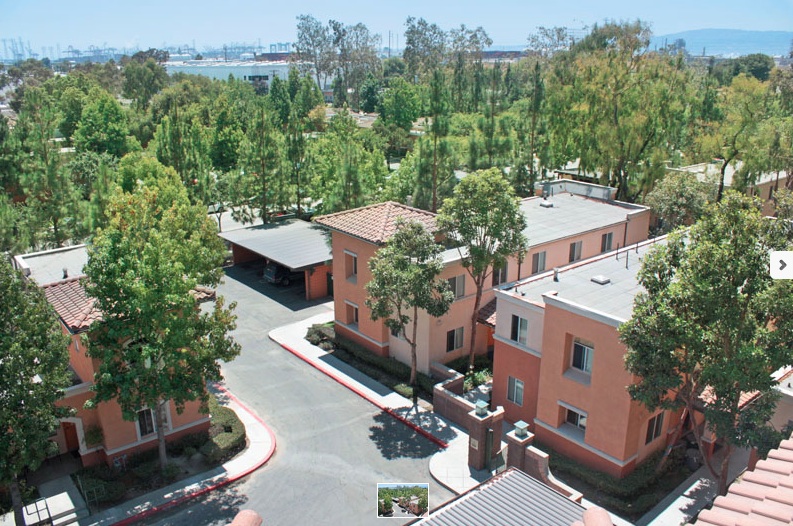The U.S. Green Building Council (USGBC) and Bank of America Charitable Foundation announced today the 11 projects selected for the 2014 Affordable Green Neighborhoods (AGN) grant program.
Each of these neighborhood redevelopment projects are pursuing certification under USGBC’s LEED for Neighborhood Development rating system and are notable for their planned affordable housing, compact design, commitment to green building and sites located near transit or other existing amenities.
“Neighborhoods are central to the health and wellbeing of an entire community, and providing affordable, sustainable housing is critical to USGBC’s mission of creating green buildings for all,” said Rick Fedrizzi, president, CEO and founding chair, USGBC. “We commend Bank of America for their support and commitment to sustainable communities and applaud this year’s grant recipients for their work to advance neighborhood scale sustainability in their communities.”
This program is funded by a two-year, $500,000 grant from the Bank of America Charitable Foundation. Since 2010, these grants have helped to create affordable, sustainable neighborhoods across the country. Each of this year’s projects will receive a $31,000 cash award as well as an educational package to support their pursuit of LEED for Neighborhood Development certification. In addition, five of the grantees will also receive a two-day, in-person technical assistance session with USGBC staff.
LEED for Neighborhood Development integrates the principles of smart growth, new urbanism and green building, while benefitting communities by reducing urban sprawl, increasing transportation choices and decreasing automobile dependence, encouraging healthy living and protecting threatened species.
The 2014 AGN grant recipients are:
• Bartlett Place – Roxbury, Mass.
• Butler Street Y Lofts – Atlanta, Ga.
• Essex Crossing – New York, N.Y.
• Faubourg Lafitte – New Orleans, La.
• Northwest Gardens – Ft. Lauderdale, Fla.
• Rebuild Potrero – San Francisco, Calif.
• Sheppard Square HOPE VI Revitalization – Louisville, Ky.
• TNT Eco-Innovation District – Dorchester, Mass.
• Villages at Cabrillo – Long Beach, Calif.
• West Grand and Brush – Oakland, Calif.
• Westview Village – Ventura, Calif.
“The commitment of these grantees to plan energy efficient, affordable housing is inspiring,” said Alex Liftman, global environmental executive, Bank of America. “Bank of America is pleased to support this initiative that’s helping strengthen our neighborhoods and accelerate the transition to a low-carbon energy future.”
The six members of the AGN review committee, who were selected for their industry leadership, represent the perspectives of architecture and design, New Urbanism, smart growth, affordable housing, community development and tax credit financing. In their deliberations, the review committee members evaluated potential projects on several criteria relating to the strength of the project, the financial needs of the project team and the potential value to the community.
Of the 20 projects previously awarded grants, seven have achieved LEED certification thus far. This includes the first LEED ND Platinum certification in the United States (Paseo Verde in Philadelphia), five LEED Silver certifications and one LEED Gold certification. These seven projects represent more than 270 acres of land, including the construction or major renovation of 4,581 dwelling units and nearly 7.875 million gross square feet of development all to the highest standards of sustainability and inclusion. The remaining AGN grant recipients are LEED registered projects working toward completion.
For more information on the AGN program and recipients, please visit our site.
Related Stories
Transit Facilities | Feb 4, 2015
London mayor approves plan for a bicycle highway
The plan will guarantee bike riders a designated stretch of street to ride from east to west through the city.
Sports and Recreational Facilities | Feb 4, 2015
Arup unveils plans for the new A.C. Milan stadium
The venue will include a modern stage for the home matches together with a hotel, sports college, restaurants, children’s playground, green areas, and spaces open to the city and dedicated to public use.
Higher Education | Feb 3, 2015
Integrated Learning Neighborhoods: A solution for linking student housing with the typical student experience
Just as urban housing fits into the city as a whole, student housing can be integrated into the campus network as a series of living/learning neighborhoods, write Gensler's Brian Watson and Mark McMinn.
Office Buildings | Feb 3, 2015
5 trends transforming workplace design
RTKL's workplace design expert Jodi Williams foresees healthier and more technologically enabled offices that allow productive worker interaction, wherever they happen to be.
Architects | Feb 3, 2015
Frank Lloyd Wright’s work nominated for UNESCO World Heritage Status
If selected, Wright’s work will be the first examples of U.S. modern architecture on the list.
Contractors | Feb 3, 2015
Nonresidential construction spending expands in December 2014
Seven of 16 nonresidential construction subsectors posted increases in spending in December on a monthly basis.
Office Buildings | Feb 3, 2015
Bjarke Ingels' BIG proposes canopied, vertical village for Middle East media company
The tensile canopy shades a relaxation plaza from the desert sun.
Fire-Rated Products | Feb 3, 2015
AIA course: Fire and life safety in large buildings
Earn 1.0 AIA/CES learning units by studying this article and successfully completing the online exam.
Multifamily Housing | Feb 2, 2015
D.C. developer sees apartment project as catalyst for modeling neighborhood after N.Y.'s popular High Line district
It’s no accident that the word “Highline” is in this project’s name. The goal is for the building to be a kind of gateway into the larger redevelopment of the surrounding neighborhood to resemble New York’s City’s trendy downtown Meatpacking District, through which runs a portion the High Line elevated park.
Healthcare Facilities | Feb 1, 2015
7 new factors shaping hospital emergency departments
A new generation of highly efficient emergency care facilities is upping the ante on patient care and convenience while helping to reposition hospital systems within their local markets.

















